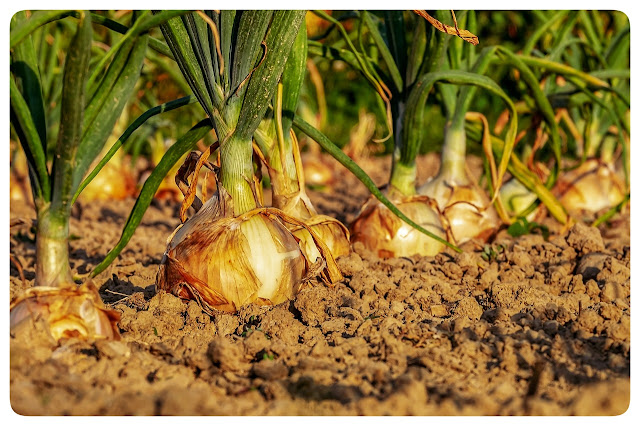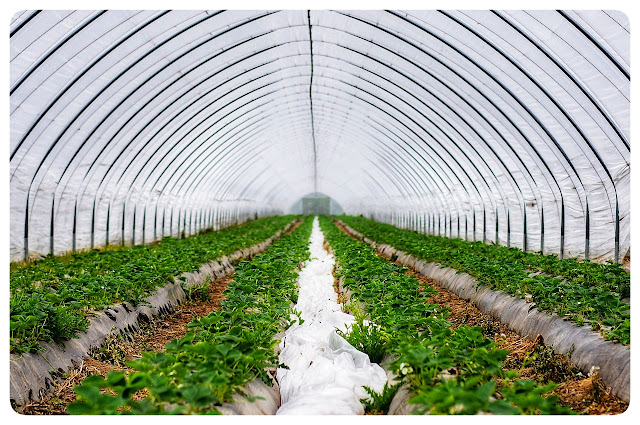Hybrid Crop Varities
Crop sorts are the cornerstone of agriculture, shaping the success and sustainability of farming practices international. In the numerous realm of crop cultivation, distinct choices have emerged: hybrid and nearby varieties. These alternatives constitute exclusive paths closer to optimizing agricultural yields whilst addressing the specific demands of various farming ecosystems.
In this comprehensive exploration, we embark on a adventure into the captivating world of crop varieties. We will now not simplest dissect the fundamental disparities between hybrid and neighborhood varieties however additionally scrutinize the profound implications every choice holds for agricultural productivity. By the time we conclude this dialogue, you'll have acquired a profound insight into those two divergent routes and the potential to figure which one aligns better together with your particular farming goals.
In the pages that observe, we are able to dissect the intricacies of hybrid and neighborhood crop varieties, resolve their respective benefits and drawbacks, and behavior a meticulous exam in their influences on agricultural yields. So, fasten your agricultural seatbelts as we navigate thru this crucial terrain, arming you with knowledge to make informed decisions that could shape the future of your farming endeavors.
1. Defination & Characteristics Of Hybrid Variety
Hybrid crop varieties represent a awesome success in agricultural technological know-how and breeding. They are meticulously crafted through a managed system of pass-breeding two genetically distinct parent sorts. These figure sorts are chosen with utmost care, decided on for their unique and applicable developments, that can consist of traits like high yield ability, improved sickness resistance, adaptability to precise environmental conditions, or even stepped forward taste an look.
Key Characteristics :
That sets hybrid sorts apart is their capacity to inherit and specific those nice trends from both parent flowers, often ensuing in offspring that exhibit superior performance in comparison to both of the figure plants personally. This phenomenon is referred to as hybrid vigour or heterosis, wherein the mixture of genetic cloth from the 2 determine varieties ends in a heightened stage of power, productiveness, and basic resilience within the hybrid offspring.
Farmers are drawn to hybrid sorts usually because of their potential to supply drastically higher yields whilst in comparison to traditional or open-pollinated types. This heightened yield capacity, coupled with other precious traits, makes hybrid crop sorts a famous preference amongst current agriculturalists striving for improved productiveness and profitability of their farming operations.
2. Advantages of Hybrid Varieties :
I. Increased Yield Potential :
One of the maximum compelling advantages of hybrid crop varieties is their high-quality capability to deliver extensively better yields compared to their discern types. This phenomenon, known as hybrid vigor or heterosis, effects from the aggregate of genetic fabric from two wonderful figure plants. The ensuing hybrid inherits the high-quality traits of both parents, regularly leading to a tremendous boost in productivity. For farmers, this indicates more considerable harvests and multiplied agricultural output.
ii. Disease Resistance :
Many hybrid crop sorts are bred with a focus on disorder resistance. They own stronger genetic defenses in opposition to common crop diseases, reducing the want for chemical interventions like pesticides and fungicides. This not simplest decreases the environmental impact of farming but also minimizes manufacturing costs and ability health risks associated with pesticide exposure for farmers and consumers alike.
iii. Uniformity :
Hybrids generally tend to show off extra uniformity in phrases of plant traits which includes length, adulthood, and yield. This uniformity streamlines crop control, making it less difficult for farmers to predict and plan for harvests. It additionally simplifies harvesting and processing, that may cause greater green and value-effective farming operations.
3. Challenges and Considerations :
I. Cost :
A awesome undertaking associated with hybrid sorts is their better price as compared to local or open-pollinated sorts. The development and manufacturing of hybrid seeds contain good sized research and improvement costs. Consequently, farmers frequently face accelerated in advance fees when purchasing hybrid seeds. This financial burden can be a deterrent, specially for aid-constrained small-scale farmers.
ii. Dependency :
Hybrid seeds do now not produce offspring with the identical tendencies as the discern hybrid plant. This feature necessitates that farmers buy new hybrid seeds every season. This reliance on outside seed resources can create a dependency that can be financially tough for farmers and limit their autonomy. Additionally, it may be a subject in regions wherein get right of entry to to dependable seed sources is confined.
Local Varities
1. Definition and Characteristics of Local Varieties :
Local crop types, frequently referred to as landraces, constitute a treasured historical past in agriculture. These varieties were nurtured and exceeded down thru generations of farmers, adapting to the precise environmental conditions and cultivation practices of precise regions. Their characteristics and developments are a testomony to the intimate relationship between agriculture and neighborhood ecosystems.
Key Characteristics :
Adaptation to Local Conditions: Local sorts are meticulously tailored to the microclimates, soil types, and altitude of the regions where they may be cultivated. This version takes place naturally over time through the procedure of selection and model by way of nearby farmers.
i. Genetic Diversity :
Local varieties contribute substantially to the genetic range of crop species. This range is valuable for breeding applications, because it presents a rich pool of genetic developments that may be tapped into to increase new sorts with ideal tendencies.
ii. Cultural Significance :
These types regularlya intain cultural and historic significance for the communities that cultivate them. They are deeply intertwined with nearby traditions, culinary practices, and agricultural rituals.
iii. Resilience :
Local types are frequently properly-perfect to the challenges and uncertainties of nearby farming situations. Their resilience can also encompass resistance to local pests and diseases, drought tolerance, or the potential to thrive in specific microclimates.
iv. Seed Saving :
Local varieties are generally open-pollinated, this means that that farmers can shop seeds from one season's harvest to plant inside the subsequent. This seed-saving culture fosters self-sufficiency amongst farming groups and decreases dependency on outside seed assets.
In precis, local crop varieties or landraces embody the understanding and resilience of generations of farmers. They have tailored to nearby environments, play a vital function in preserving genetic diversity, and are imbued with cultural significance. These sorts are a testomony to the sustainable and harmonious courting between agriculture and the environment.
2. Advantages of Local Varieties :
i. Adaptability :
Local crop varieties have advanced and adapted over generations to thrive in particular environmental situations, such as soil types, climates, and altitudes. This adaptability is a notable advantage as it means that those varieties are clearly acceptable to the local environment. They require fewer inputs like water, fertilizers, and pesticides, making them a sustainable preference for resource-aware farmers.
ii. Genetic Diversity :
Local varieties contribute notably to biodiversity. Each region may additionally host a completely unique set of local types, and those variations in genetics can be a treasured useful resource. They function genetic reservoirs that contain developments no longer located in industrial vegetation, which can be essential for destiny breeding applications. This genetic variety can be critical within the face of changing environmental conditions and rising pests and sicknesses.
iii. Low Cost :
One of the maximum appealing features of nearby varieties is their fee-effectiveness. Since farmers can shop seeds from one season to the subsequent, there may be no need to buy seeds yearly. This fee-saving element aligns with sustainable farming practices and may be particularly useful for small-scale and subsistence farmers with confined monetary sources.
3. Challenges and Considerations :
i. Yield Variability :
While nearby sorts have tailored to local conditions, they'll show off higher yield variability in comparison to hybrid opposite numbers. Their yields might also range depending on factors like weather patterns, soil first-rate, and pest pressures. This can pose a challenge for farmers looking for constant and excessive yields for marketplace functions.
ii. Limited Commercial Appeal :
Local types might not agree to the uniformity and appearance standards anticipated in industrial markets. Consumers frequently choose vegetation which have a constant look, making it difficult to marketplace local types that could display extra variety in phrases of length, form, or shade. This can restriction their marketability and capacity for higher charges.
Impact On Agriculture Yield
1. Comparative Yield Analysis :
Comparing the yields of hybrid and nearby crop sorts is critical for making informed selections in agriculture. Numerous studies and real-international examples have shed mild at the yield variations among thosetwo classes throughout diverse plants and regions. Let's delve into a few examples and the factors that influence these yield disparities.
1. Maize (Corn) :
Study :
A examine conducted in the Midwest United States as compared the yields of hybrid and nearby maize sorts over numerous developing seasons.
Results :
The hybrid maize consistently outperformed neighborhood sorts in terms of yield, with an average 20-30% higher production.
Factors Influencing Yield :
The fertile soils and temperate weather of the Midwest furnished most advantageous situations for hybrid maize. The genetic uniformity of hybrids also performed a function in steady excessive yields.
2. Rice :
Study :
Research in Southeast Asia as compared the yields of hybrid and nearby rice sorts.
Results :
Hybrid rice varieties displayed a yield gain of about 10-15% over nearby sorts.
Factors Influencing Yield :
The availability of water for irrigation become a tremendous element. Hybrid rice varieties frequently required extra water, which favored their increase. Additionally, pest pressure prompted yield, with a few hybrids showing resistance to not unusual rice pests.
3. Wheat :
Study :
Trials in South Asia examined the overall performance of hybrid and neighborhood wheat varieties.
Results:
Hybrid wheat sorts exhibited better yields, commonly 10-20% more than local varieties.
Factors Influencing Yield :
Soil quality, specially nutrient content material and pH ranges, played a function in yield differences. Hybrid types regularly had better nutrient uptake efficiency.
4. Tomatoes :
Real-world Example :
A farmer in a Mediterranean place as compared a hybrid tomato range to a domestically adapted heirloom range.
Results :
The hybrid tomatoes consistently produced larger yields and exhibited better resistance to illnesses like blight.
Factors Influencing Yield :
The Mediterranean climate favored the hybrid variety, which have been bred to thrive in these conditions. Disease resistance contributed to decreased crop loss and better yields.
In these examples, the selection between hybrid and neighborhood sorts considerably impacted crop yields. Several factors motivated these yield differences, such as:
1. Environmental Conditions :
Soil best, weather, and water availability are important factors. Some hybrids may be specially bred for positive situations and may outperform local varieties in the ones environments.
2. Farming Practices :
Farming strategies, such as irrigation strategies, fertilization, and pest management, can have an effect on yields. Hybrid varieties can also require special practices to realise their full yield ability.
3. Pest and Disease Pressure :
Some hybrids are bred for resistance to unique pests and sicknesses, that can cause better yields whilst those demanding situations are typical





































